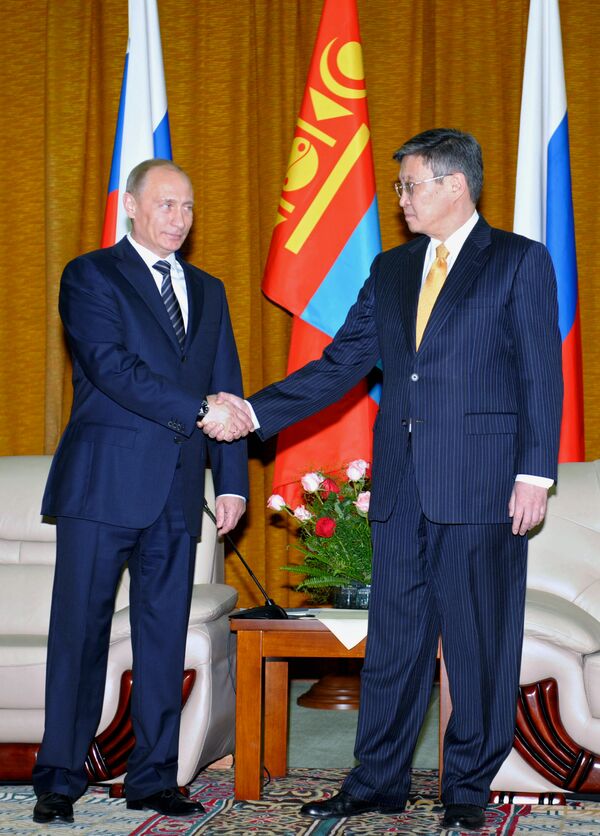MOSCOW. (RIA Novosti economic commentator Oleg Mityayev) - The Russian rail monopoly and its Mongolian partners agreed to set up a joint venture during Prime Minister Vladimir Putin's visit to Mongolia on May 13.
Russian Railways (RZD) has pledged to modernize and build railways in return for development licenses for Mongolia's largest deposits, the Tavan Tolgoi coal deposit and the Oyu Tolgoi gold and copper field.
It has signed an accord with Erdenes MGL, the Mongolian state mining company, and MTZ, the country's national railway company, to set up a joint venture to build railways to the mineral deposits and develop the fields. The Russian company will hold a 50% stake in the $7-billion venture, while the Mongolian partners will each hold 25%.
At the initial stage, they are to contribute $1.8 million for a feasibility study, which is due to be ready by September. The JV will receive development licenses for the deposits in 2010.
Erdenes MGL owns all strategic deposits in Mongolia, including the Oyu Tolgoi (Turquoise Hill) gold and copper project, the Tavan Tolgoi coal deposit, and the Dornod uranium deposit.
MTZ owns railroad assets, including a fiber-optic-based railway communication system, while Mongolia's railroads proper are controlled by Ulaanbaatar Railway, parity owned by the governments of Mongolia and Russia.
Tavan Tolgoi, located 342 miles from the Mongolian capital, is one of the world's 10 biggest coal deposits (6.5 billion tons).
Oyu Tolgoi (32 million tons of copper and 32 million oz of gold) is located in the south Gobi region 342 miles south of Ulan Bator and 50 miles north of the Chinese-Mongolian border.
The joint venture will not develop the deposits, but will hold tenders to choose co-investors. It will form project operators with the winners, holding 25% plus one share in them and leaving 75% minus one share to the selected co-investors.
In the past, RZD planned to recruit the assistance of Oleg Deripaska's En+ Group, Viktor Vekselberg's Renova, and Alexei Mordashov's Severstal Resurs for these projects.
En+ and Renova are ready for cooperation, but the new agreement stipulates that the Russian-Mongolian joint venture is to hold tenders. This means that the Russian miners will not receive any privileges and will have to participate in the tenders on a par with Japanese, Chinese, American and other contenders.
Mongolia also hopes that Russia's contribution ($250 million) could be used to increase the charter capital of Ulaanbaatar Railway, half of whose railroads need to be overhauled. It also expects Russia to provide an easy loan ($300 million) for the purchase of Russian grain, agricultural machinery and mineral fertilizer, and a $1.5 billion loan facility for other purposes.
The partners also agreed to set up a joint venture to process uranium produced at the Dornod deposit (49,000 tons, located in northeast Mongolia) and the East Gobi fields. The Russian partner will be Rosatom, with Japan's Mitsui considering participation.
The stakes to be held by the partners and possible investment have so far not been determined.
Currently, Russia's largest projects in Mongolia are Erdenet and Mongoltsvetmet, joint non-ferrous producers established during the Soviet era. Mongolia holds controlling stakes in them (51%) while Russia's stakes (49%) have been recently turned over to the Russian Technology state corporation.
The corporation is considering adjusting the Erdenet project to the Udokan copper project in Russia. Russian Technology's partner, Alisher Usmanov's Metalloinvest, has been recently granted the development license for the Udokan project.
The opinions expressed in this article are the author's and do not necessarily represent those of RIA Novosti.

